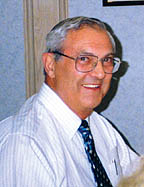
If we all spoke different languages we would have difficulty in communicating. So most industries have developed specifications in order for all distributors, manufacturers, and end-users to be talking about the same features and qualifications.
Specifications are simply a shorthand way of describing a product in terms of:
- Method of manufacture (cast, wrought, forged, machined);
- Grade of material (cast iron, malleable, carbon steel, stainless steel, bronze);
- Chemical & mechanical requirements (properties and testing);
- Dimensions and tolerances;
- Pressure ratings and testing methods.
ASTM specs (developed by the American Society for Testing & Materials) describe the material to be used. The specs state both the chemical composition and the mechanical requirements that must be met, and also the marking identification on the finished product.
ASME specs (American Society of Mechanical Engineers) are replacing ANSI specs (American National Standards Institute) that cover dimensions, pressure/temperature rating and manufacturing methods.
MSS -SP specs (Manufacturers Standardization Society of the Valve and Fitting Industry) are Standard Practices written by manufacturers with participation of industry engineers for products not covered by existing ASTM and ASME standards. MSS standards include materials, dimensions, pressure ratings and testing.
A modicum of technical training for “non-technical people,” such as order desk sales staff, does not require rocket scientist qualification. A “speaking acquaintance” with the spec number and name by salespersons increases their professionalism to the customer. A basic familiarity with specs gives salespeople an edge and, more important, may preclude costly goofs.
Although many sales inquiries and quotations do not call out specs, when they are included, a recognition of the spec and ready access to a simple listing is usually enough to take the inquiry. When in doubt, the salesperson can call the customer back after seeking help from a supervisor or staff engineer to verify that existing inventory conforms to the specs when included in the inquiry.
A major ingredient of distributor sales training is “product knowledge,” but too often exposure to specifications is overlooked. Salespeople, particularly newer sales trainees, are familiar with the generic names for the various products but often do not know there are limitations and requirements in many specifications. The teaching and explanation of the specs can be given in small doses, incorporated into normal sales meetings as a regular segment of each meeting.
What follows is a PVF SPEC CHART listing the most commonly used specifications in industrial pipe, flange and fitting purchasing. Many of these are also used in plumbing and commercial piping. An asterisk (*) denotes the primary spec for each product. The chart is laid out by product for quick and easy identification.
Give your salespeople some minimum education on the common specs and they will be armed with enough technical knowledge to prevent potentially costly problems of a customer ordering the wrong item, delaying the job, and generating a paperwork-intensive return.
- Alvin Markus
Alvin Markus is head of PVF Engineering, Consultant to the PVF Industry. He is a veteran of 30 years manufacturing as president of Sunweld Fitting Co., 15 years distributing with Smith-Cooper International as vice president, engineering & quality assurance, 12 years as a PVF consultant including sales & inspection training seminars. He can be reached at 310/551-5273 or e-mail: amarkusla@aol.com.
